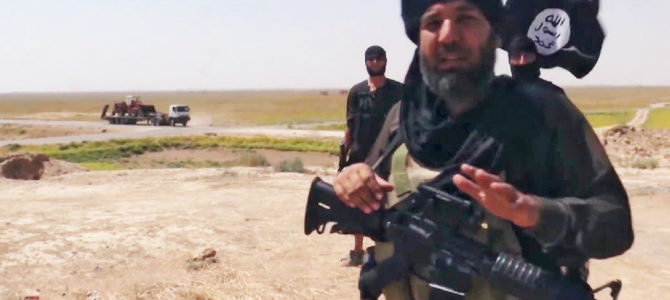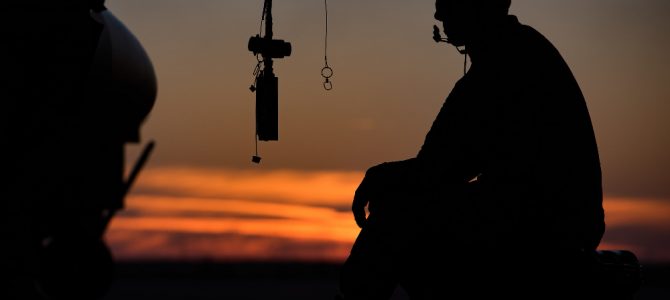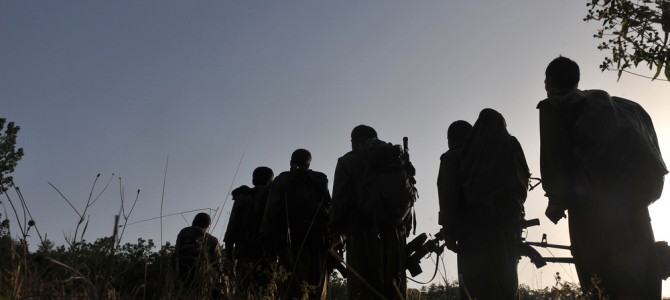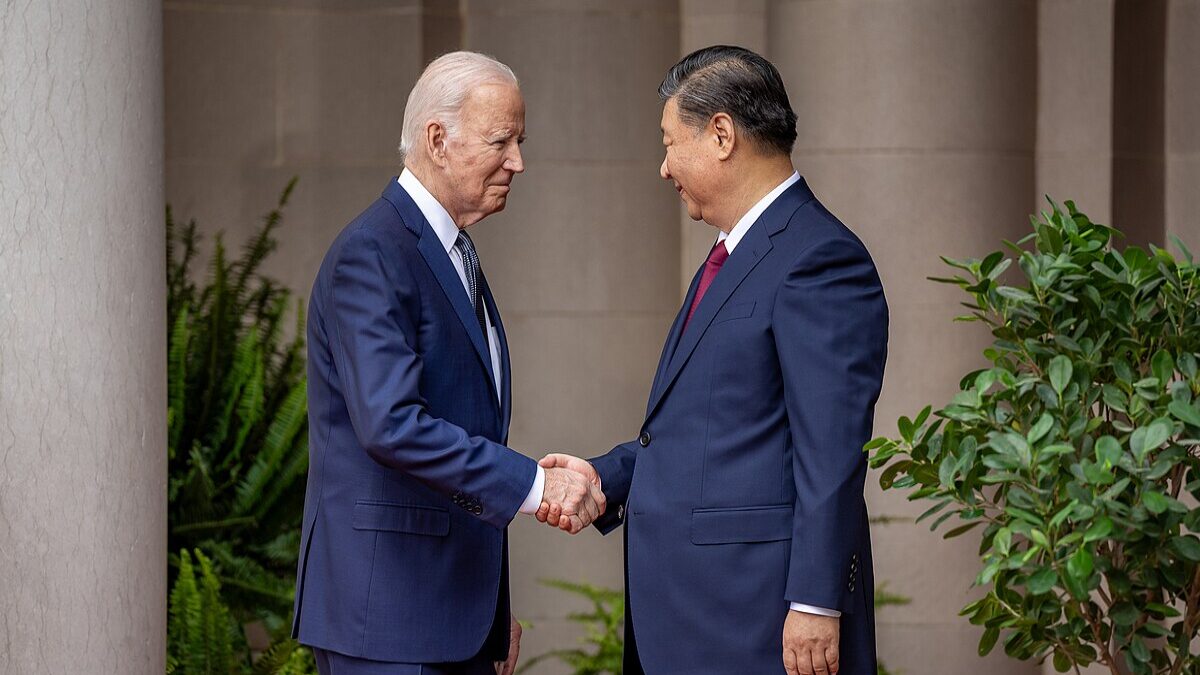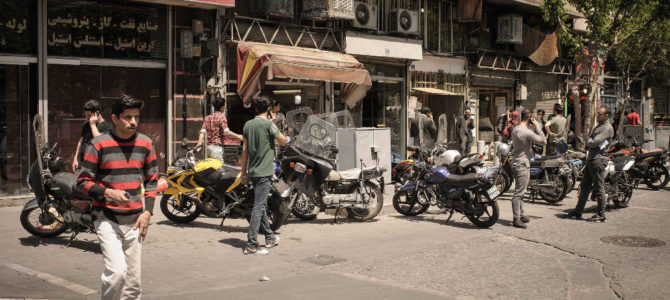
In an exceedingly rare occurrence, Iran was the target of a coordinated terror attack on Wednesday morning that left at least 12 dead and many more injured. ISIS was quick to claim responsibility for the dual bombings of two symbolic locations in the heart of Tehran, making it the first Islamic State attack in the majority-Shiite Islamic Republic since the group emerged in 2014. Iran subsequently announced that the attackers were Iranian nationals who had joined ISIS.
Iran is looking to place the blame anywhere but on domestic unrest among its Sunni minority. But Iranian Sunnis should expect a harsh crackdown in the weeks and months to come, whether they were involved or not.
The first attack happened at Iran’s parliament, where it appears four men entered the building dressed as women, opened fire, took hostages, and detonated at least one suicide bomb. All four attackers are believed to have been killed. The other attack, involving a female suicide bomber, was launched at the Ayatollah Khomeini mausoleum, a de facto shrine to the founder of the Islamic Republic. Iranian security services say they foiled a third attack, although few details are known.
The locations were carefully selected to strike at the heart of the country. The first, a symbol of Iran’s government, reveals its vulnerability. The second targeted the soul of the country’s revolutionary past. Iran is exceedingly proud that it was able to overthrow the shah in its 1979 revolution and thereby shrug off American influence. In other words, Wednesday’s attacks seem not to have been randomly or spontaneously inspired by ISIS, but carefully planned to hit a nerve and grab international attention.
ISIS’s Increasing Interest in Iran
Surrounding countries have been the targets of Islamic State terror attacks over the last several years but no plot had yet been successfully carried out in Iran, although Iranian officials claim to have foiled several ISIS schemes.
But in recent months, ISIS has ramped up its propaganda in Iran, including publishing, for the first time, four issues of its magazine, Rumiyah, in Persian, and putting out a Persian-language video calling on Iranian Sunnis to rise up against the Shiite government. These aren’t the first instances of Persian-language ISIS propaganda, but they represent a significant increase after years of failing to inspire Iran’s Sunni population to join the Islamic State’s movement.
Some experts have speculated that recruitment efforts were unsuccessful because of Iran’s relative stability, while conflicting reports indicate that Iran has prevented as many as 1,500 Iranians from joining ISIS, likely through Tehran’s notoriously heavy-handed police measures.
So far, nothing is known about the attackers, and Iranian authorities are being characteristically tight-lipped. So it remains unclear whether the recent propaganda push was successful in recruiting Iranian Sunnis to launch the attacks or whether they are the work of ISIS members from Syria or Iraq who infiltrated the country.
Regardless, it represents a significant setback for the Iranian government, which has boasted about how safe Tehran is compared to major cities in neighboring countries (the last major attack in Iran was in 2010 and involved a Sunni extremist group) and has downplayed the threat from ISIS. When the Persian-language ISIS video first came out in March, Iranian officials said it was a sign of Islamic State’s desperation and increasing impotency.
But the group’s ability to coordinate this attack, along with its success in planning and inspiring two attacks in Britain in the past two weeks, shows just how complex the matter is. Losing its territorial holdings—its “caliphate”—does not, it would seem, translate to a decrease in the threat posed by the group in the Middle East or in Europe.
What This Terror Attack Says About What Happens Next
Now that ISIS has proven its capability to strike at the symbolic heart of Iran, expect to see a simultaneous downplaying of the attacks alongside a crackdown on the Sunni population. Iran’s speaker of the parliament has already called Wednesday’s attack a “minor issue.” Above all, Tehran doesn’t want to appear weak or let on that it has domestic problems like other countries in the region that have experienced disastrous instability during and after the Arab Spring.
Iran’s Revolutionary Guard lashed out at the Saudis on Wednesday, claiming they were somehow responsible for the attack, which they also tried to tie to President Trump’s visit to Saudi Arabia last month: “World public opinion, especially in Iran, sees the fact that this terrorist act was perpetrated soon after the meeting of the US president with the heads of one of the reactionary regional states that has always supported … terrorists as to be very meaningful.”
This, too, is part of a strategy to deflect the idea that ISIS, or Iran’s Sunni minority population, pose a threat to the regime or the country’s stability. It’s easier for Iran to blame its traditional enemy in the region, the Saudis, and its international nemesis, the Great Satan (America).
But at the same time it downplays the significance of the attacks, expect Iran to crack down on Sunnis within its borders. Sunnis, who make up just 9 percent of Iran’s predominantly Shiite population, already experience persecution in Iran: they are harassed and have been imprisoned, Sunni teachings are reportedly banned in public schools, and Sunni mosques and schools are not allowed to be built.
Their treatment makes them an obvious target for ISIS recruitment, and Iranian officials know it, despite what they say publicly. Whether Wednesday’s attacks turn out to have been perpetrated by Sunni Iranians or ISIS members from outside the country, things are about to get a lot worse for Iran’s Sunni population. Also, the tensions between Iran and Saudi Arabia, already elevated by the break in diplomatic ties between the Arab Gulf states and Qatar, an Iranian ally, just escalated even more.



